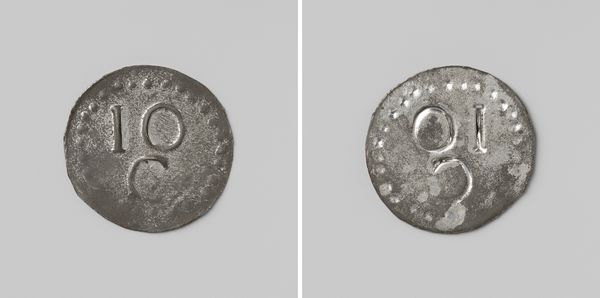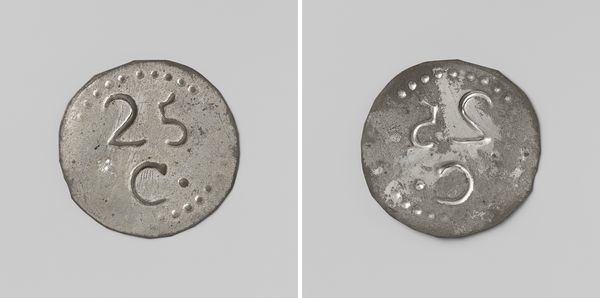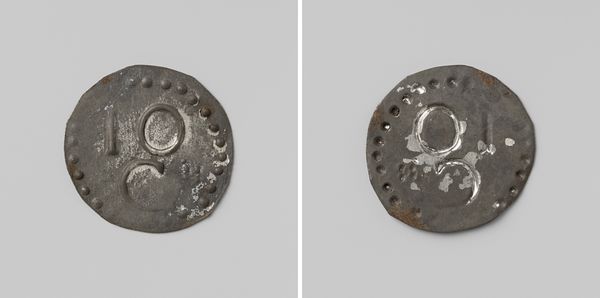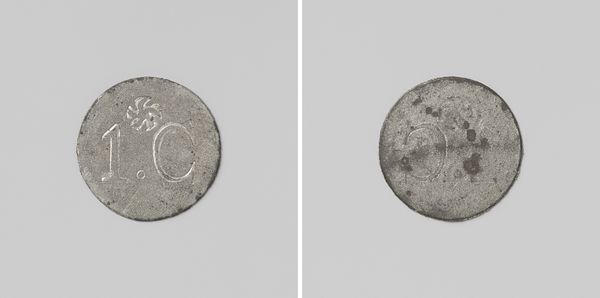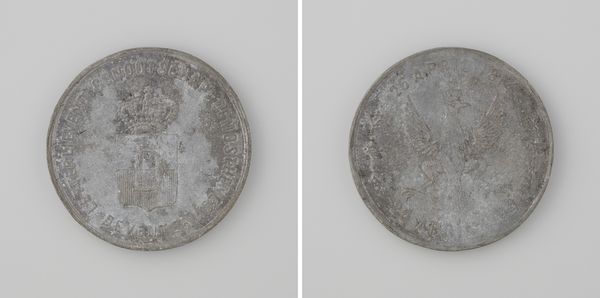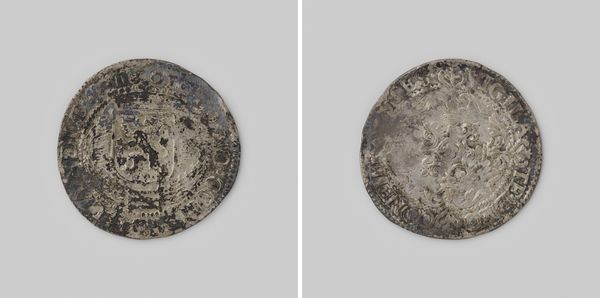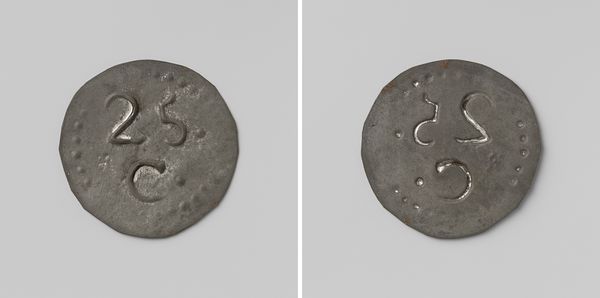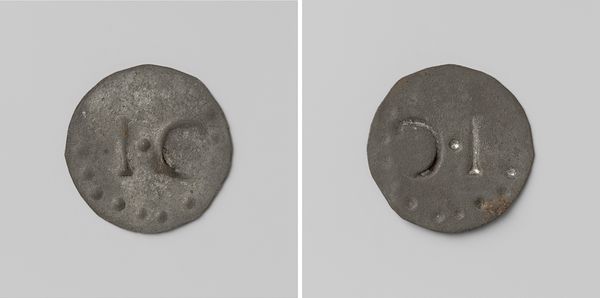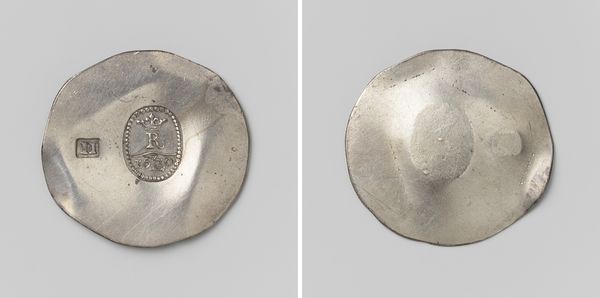
Strafgevangenis Ommerschans, huismunt geslagen op last van de Maatschappij van Weldadigheid ter waarde van vijf cent before 1830
0:00
0:00
print, metal, relief, sculpture
#
medieval
# print
#
metal
#
sculpture
#
relief
#
sculpture
Dimensions: diameter 3.3 cm, weight 2.29 gr
Copyright: Rijks Museum: Open Domain
Editor: Here we have a house coin valued at five cents, originating from the Ommerschans penal colony sometime before 1830. I am struck by its crude construction. It seems quite distant from what we usually consider as art. How should we approach interpreting this? Curator: Indeed. Consider the social and economic context: a penal colony, a closed system of production and consumption. The very *material* of the coin, likely cheap metal readily available, and the method of its striking - surely done with basic tools - speaks volumes about the conditions of labour within that space. This isn’t high art, it's an artifact of a brutal economic reality. Editor: So you are suggesting we need to think about this object primarily in relation to labour conditions and power dynamics, as opposed to its aesthetic properties? Curator: Precisely. We must challenge the conventional boundaries of "art." The coin itself represents a form of control. What does it mean for an organization like the Maatschappij van Weldadigheid to mint their own currency, effectively creating a closed financial system within the prison? It is a way of isolating inmates and creating economic dependency. Editor: It becomes almost a tool of social engineering. The metal itself and the impression it bears are almost secondary to this purpose, aren’t they? I hadn’t thought of it that way initially. Curator: Absolutely. Its value isn’t intrinsic; it’s assigned. It's all about production, labour, and, ultimately, power structures rendered in base metal. Editor: Thank you. That gives me a fresh, and rather disturbing, way to understand the object. Curator: The pleasure is mine, objects such as these enable a whole new field of inquiry to open up around a more typically 'everyday' object.
Comments
No comments
Be the first to comment and join the conversation on the ultimate creative platform.
